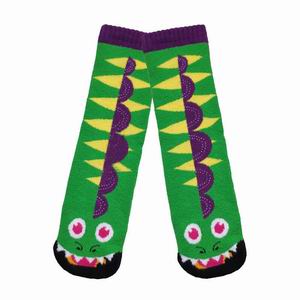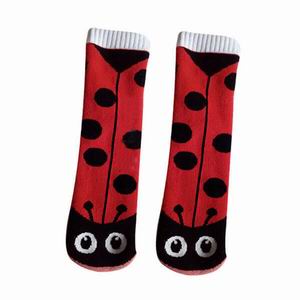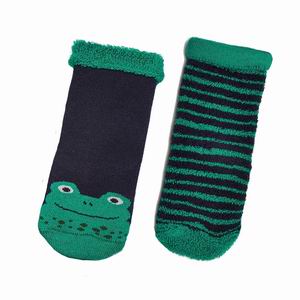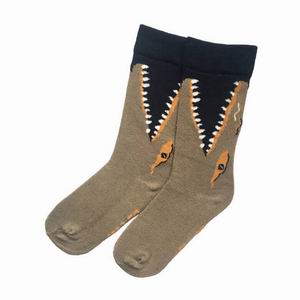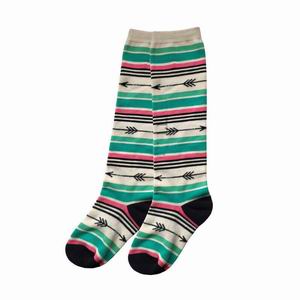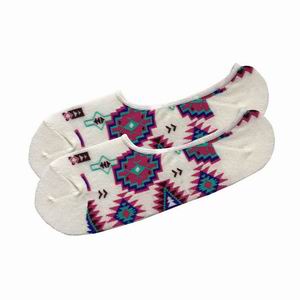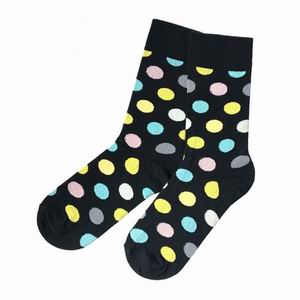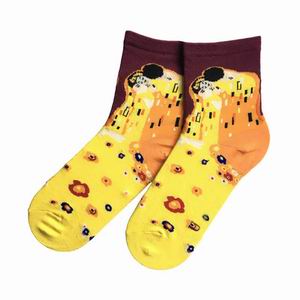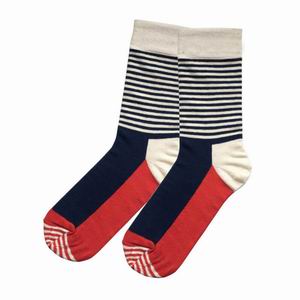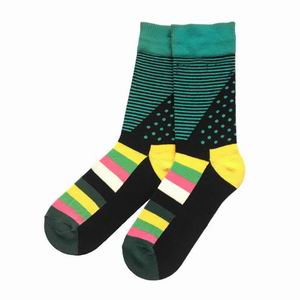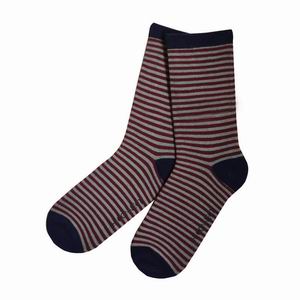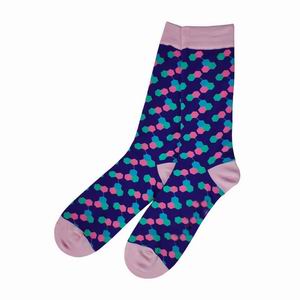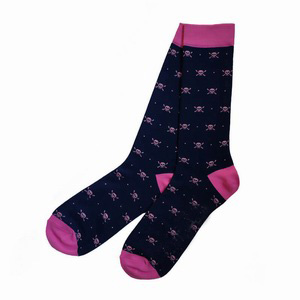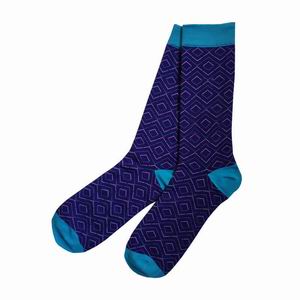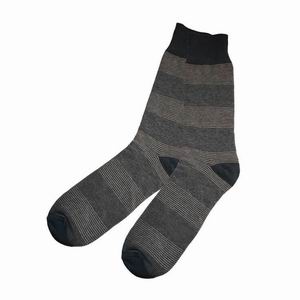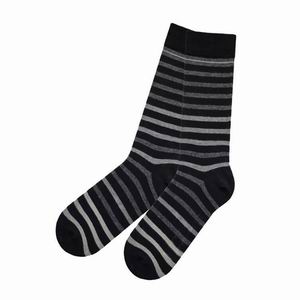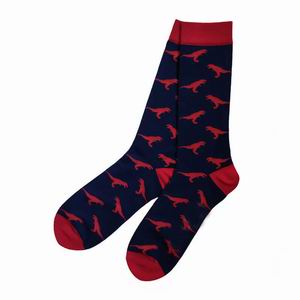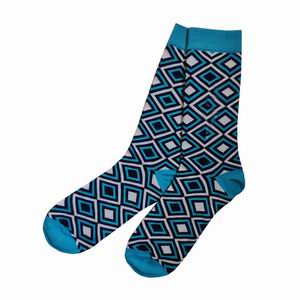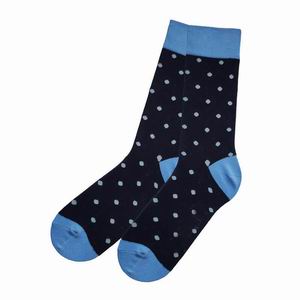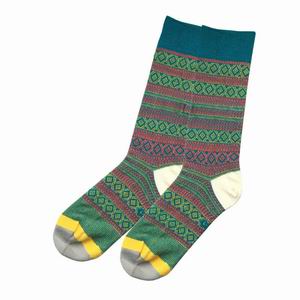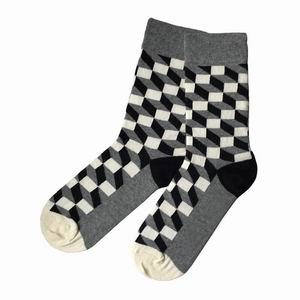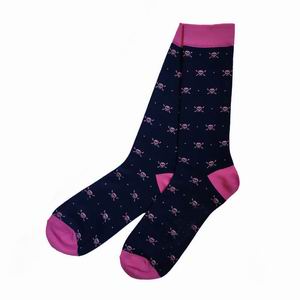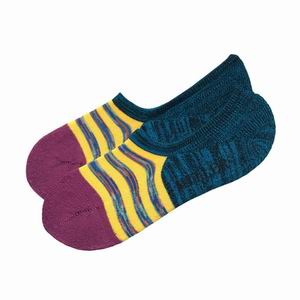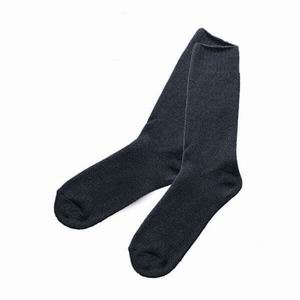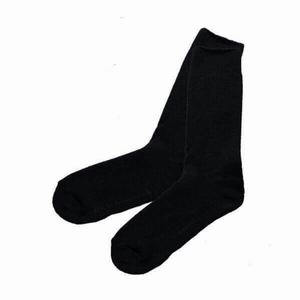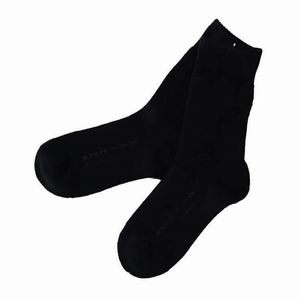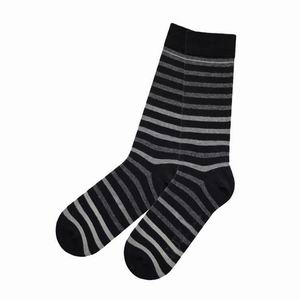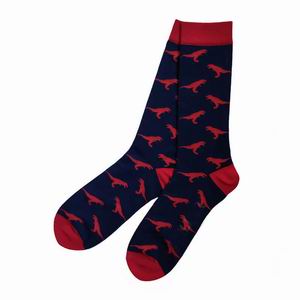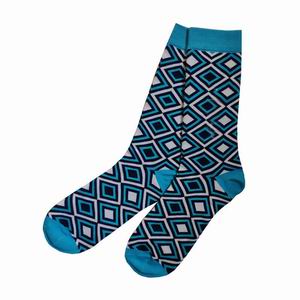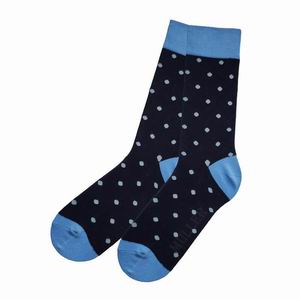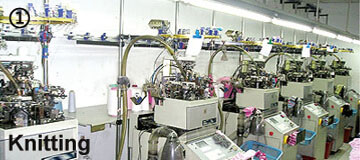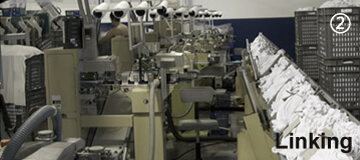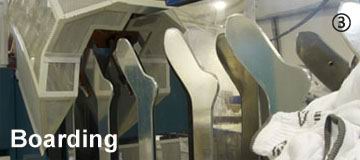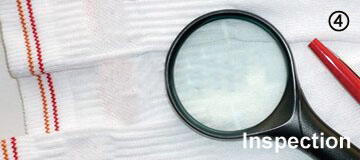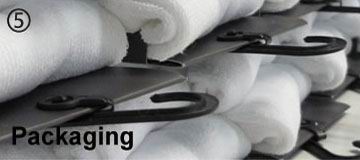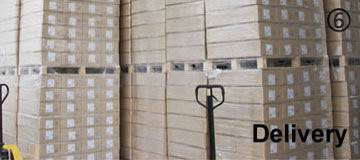Casual Socks Manufacturer
At our vertically integrated manufacturer, we specialize in crafting premium casual and dress socks. We’re committed to continuous innovation, from selecting the finest raw materials to refining our manufacturing processes. Our diverse product line includes high-quality socks made from bamboo fiber, combed cotton, mercerized cotton, and merino wool, available in various gauges from 3.5 to 5.0 and needles 108n, 120n, 144n, 168n, 200n.
1.Products
1.1 Yarn
1.1.1 Yarn Count
It mainly uses 21s and 32s yarn count.
1.1.2 Material
It mainly includes bamboo fiber, combed cotton, mercerized cotton, merino wool, etc.
-
Bamboo fiber. It is eco-friendly fiber that dries quickly and is breathable while also providing antibacterial properties and repels odors.
-
Combed cotton. The short fibers and impurities in the cotton fiber are removed, making the texture softer and less prone to pilling, making it very suitable for sensitive skin.
-
Merino wool. Super soft, itch-free, breathable, highly durable and odor-repellent, with great warmth retention properties.
-
Modal. It feels silky, soft and smooth, has less fading, is highly absorbent and anti-wrinkle, and becomes softer and brighter after multiple washes.
- Mercerized cotton. Natural fiber, biodegradable, changes the cell structure of cotton fiber, significantly enhances comfort and gloss.
-
Spandex. It has excellent elasticity, is 2-3 times stronger than rubber latex thread, and has a finer linear density. It has good acid and alkali resistance, sweat resistance and wear resistance.
1.2 Jacquard
It is mainly divided into single-sided colored yarn jacquard, double-sided colored yarn jacquard, and concave-convex pattern jacquard.
-
1.2.1 Single-sided colored yarn jacquard is provided by one or more auxiliary yarn ports in addition to the main yarn supply port on a single-cylinder sock machine, and is controlled by jacquard equipment to form patterns.
-
1.2.2 Double-sided colored yarn jacquard is made by passing more than two main yarns of different colors through the jacquard mechanism on a double-cylinder sock machine, and controlling the knitting needles to eat the yarn and form a loop to form a pattern.
-
1.2.3 Concave-convex jacquard is a relief-like pattern formed by alternately knitting the front and back loops of the fabric on a double-cylinder sock machine. It can also enhance its three-dimensional effect by revealing different colors in the front and back loops.
1.3 Pattern
There are mainly stripes, plaids, flowers, animals and other patterns.
1.4 Function
It mainly has functions such as moisture wicking, warmth retention, and deodorization.
1.5 Details
The quality of socks workmanship is mainly reflected in details such as the socks cuff, socks toe, and socks sole, such as breathable mesh, stable arch support, cushioned terry bottom, reinforced toe and heel, etc. The main problems include being airtight, easy to break holes, grinding the feet, slipping on the soles, easy to slip off the cuffs, thick toe seams, and easy to open seams, etc.
Through continuous research, the solutions to the above problems are as follows.
1.5.1 Airtight
The socks are designed with mesh and yarns such as bamboo fiber or Coolmax to enhance breathability and improve moisture wicking effect.
1.5.2 Grind the Soles
For flat feet, small terry tissue is used instead of flat tissue, which increases the cushioning when walking and makes it no longer easy to wear the soles of the feet.
1.5.3 Easy to Break Holes
Sock toes, soles, heels and other areas prone to holes are reinforced with high-quality nylon yarn to enhance firmness.
1.5.4 Thick Toe Seams
A sewing worker with more than 10 years of experience will make the sock toe close to seamless if computerized sewing is used; if eye-stitching is used, the sock toe will be smooth and seamless.
1.5.5 Seams Open Easily
The use of high-quality nylon yarn as the suture line at the sock toe and ankle seams can increase the firmness of the seams, and at the same time, no tiny openings are missed when the sock toe is sewn.
2.Manufacturing
The process is sampling, knitting, linking, boarding, inspection, packaging, etc.
2.1 Sampling
Before bulk production, we create a technical sheet that contains are the information to produce the desired socks. Sample pairs are produced and sent to client for quality, size, color, drawings and other elements confirmation. We only start production when the samples are approved. If required we can perform test reports.
2.2 Knitting
After the sample is confirmed, we produce the order as per the established specifications and requirements. At present, we have 6 skilled mechanics, 30 experienced knitters, and 80 computerized sock machines. The sock machines are equipped with single and double syringes of different gauges and needles.
2.2.1 Single Syringe
It can produce long, medium and short socks, and knit various tissues such as plain stitch, plated yarn, tuck, jacquard, terry and horizontal strips.
-
Caliber. There are mainly 3.5-inch, 4.0-inch, 4.5-inch and other calibers.
-
Needles. There are mainly 108, 120, 132, 144, 168, 176, 200 and other needle numbers.
-
Threads. It can provide 10F of threads, of which 2F are used for knitting and 8F are used for jacquard. It can produce 8-color jacquard products.
They are mainly single-sided colored yarn jacquards.
2.2.2 Double Syringe
-
Gauges. It mainly includes 3.5-inch, 4.0-inch and 4.5-inch gauges.
-
Needles. There are 108、120、132、144、168、176、200 needles.
-
Threads. It can provide 10F of threads, of which 2F are used for knitting and 8F are used for jacquard. It can produce 8-color jacquard products.
-
Jacquard. There should be double-sided colored yarn jacquard and concave-convex pattern jacquard.
2.3 Linking
At present, it mainly uses two methods to link the head, such as manual cross-stitching and straight blind stitching.
2.3.1 Straight Blind Stitching
This method uses a straight sewing machine, uses overlock stitching, and wraps the sock toe coil with stitches to produce a relatively flat sock toe.
2.3.2 Manual Cross-Stitching
This method uses a round socks machine, and the stitched socks toe coils are sequentially put on the needle of the sewing machine to sew. The socks toe produced has no ribs.
2.4 Boarding
All socks pass through are boarding machines to give them a clean look and feeling before being packed. There are 1 rotary electric steam boarding machine, which is generally used for setting short socks, and 2 hanging electric steam boarding machines, which are suitable for all types of socks.
2.5 Inspection
Quality inspection takes placed in every step of the production process and the most thorough product quality inspection takes placed right before packaging in order to guarantee that no socks are defective or contaminated. Quality inspections can be arranged with external entities.
2.5.1 Formaldehyde Content.
Class A products ≤ 20mg/kg, which refer to products used by infants and young children.Class B products ≤ 75mg/kg, which refer to products that come into direct contact with the skin when worn.
2.5.2 Ph Value
4.0-7.5, it can be understood that Class A and Class B products should be in this range (there are no Class C products in socks).
2.5.3 Bad Smell
None. There should be no smell in finished socks.
2.5.4 Decomposable (carcinogenic) Aromatic Amine Dye
Disable. Some dyes are harmful to the human body and even cause canceration, such as azo dyes, the standard stipulates that the use of these dyes should be prohibited, and the detection limit should be ≤ 20mg/kg.
2.5.5 Color Fastness to Water
It refers to the change of color fastness of socks after exposure to water. According to the test of discoloration and staining, class A products ≥ grade 4, class B products ≥ grade 3.
2.5.6 Color Fastness to Acid and Alkali Perspiration
The change of color fastness of socks in the presence of acidic or alkaline sweat can be divided into discoloration and staining tests, class A products ≥ grade 4, class B products ≥ grade 3.
2.5.7 Color Fastness to Dry Friction
The change of color fastness of socks under the condition of non-wetting and friction at room temperature: class A ≥ grade 4, class B ≥ grade.
2.5.8 Color Fastness to Saliva
It refers to the change of color fastness of socks when they encounter saliva. Divided into discoloration and staining test, Class A products ≥ grade 4, Class B products are not tested.
2.6 Packaging
After passing quality inspection, it will be packaged according to customized requirements. At present, there are packaging cardboard, cardboard bags, cartons and other types of packaging. It involves packaging materials such as packaging cardboard, cardboard bags, cuff labels, size stickers, sock hangers (paper cards), waist seals, packaging hooks, sock toe/cuff fasteners, outer packaging cartons and other packaging materials.

